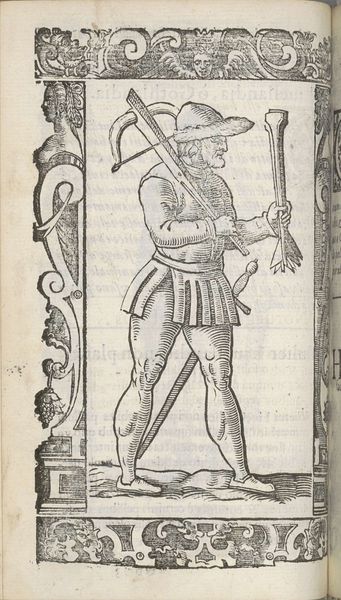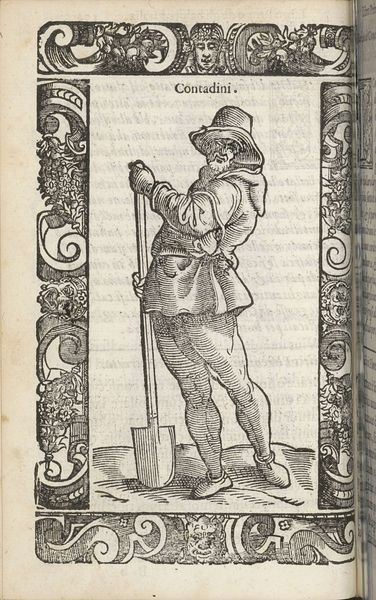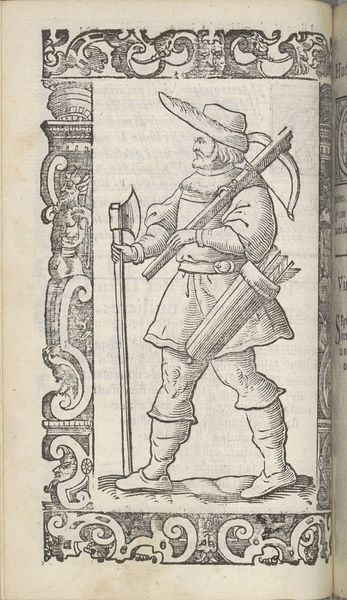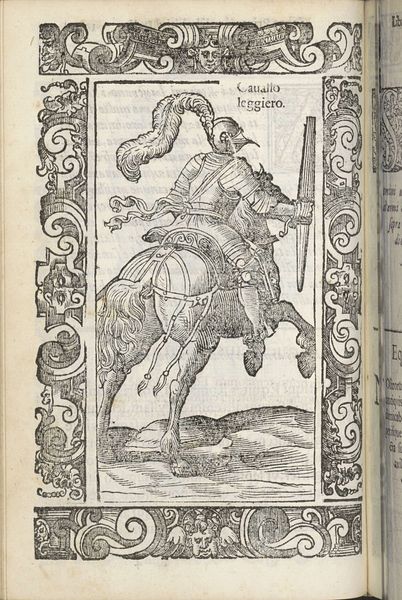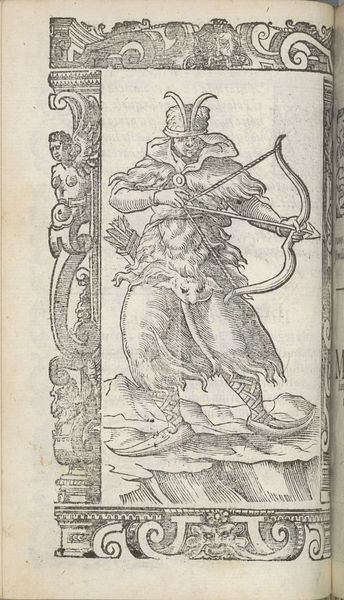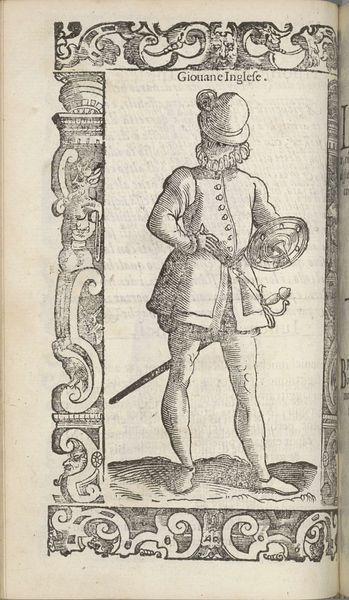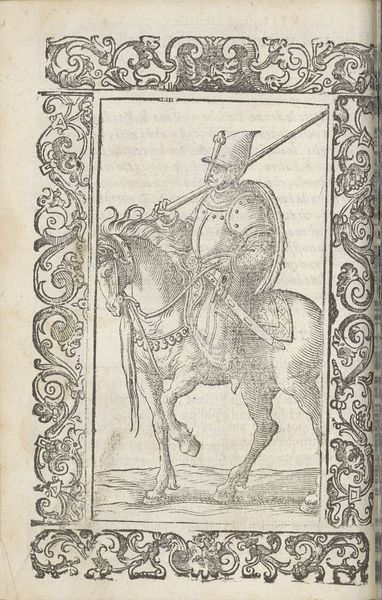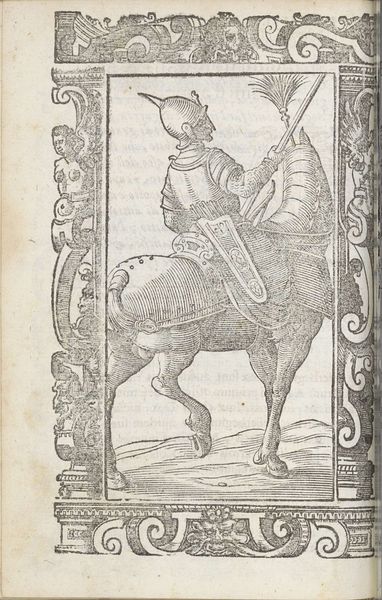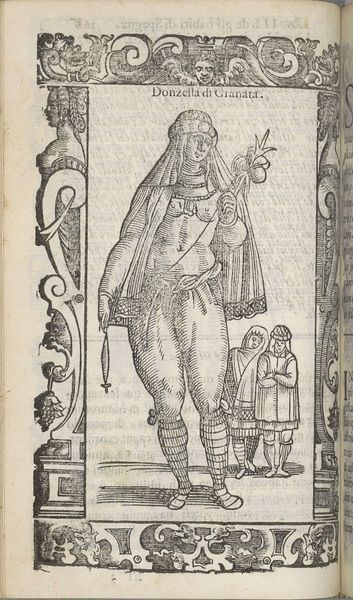
print, woodcut, engraving
#
medieval
#
narrative-art
#
pen drawing
# print
#
figuration
#
woodcut
#
line
#
engraving
Dimensions: height 167 mm, width 125 mm
Copyright: Rijks Museum: Open Domain
Curator: Good morning. We’re looking at "Cavalieri gothi antichi," an engraving by Christoph Krieger from 1598. It presents a mounted knight in elaborate armor, framed within a decorative border. What are your first thoughts on it? Editor: Stark, powerful. The monochromatic palette creates an intense atmosphere. The linework is quite intricate. But the rigidity, the linearity...there’s something a little unsettling about it. Curator: The strength of line certainly defines the image. Krieger employed a woodcut and engraving technique to meticulously render form and texture. The visual language speaks to the prevailing artistic conventions of the period. Notice how the artist creates depth using simple hatching techniques to convey the texture of the armor, the folds of the fabric, and the undulation of the landscape. Editor: The decorative border also frames a peculiar narrative. Are these figures meant to symbolize nobility? There’s almost a medieval romance feel to this print, contrasting with the socio-political anxieties of its time, perhaps? It feels rather formalized. Curator: Krieger was working in an era grappling with shifts in power. Such prints circulated widely, shaping perceptions of history and identity. Prints such as this could have been designed to promote the existing order. The details of attire and accouterments speak volumes about social position. Editor: Exactly. Think about where it was published and who consumed it. Such imagery served the interests of particular elites. I find myself questioning whose version of history is being presented and validated through such imagery. Curator: An astute point. Examining the materials – woodcut, engraving - also brings up interesting discussions around craft and dissemination in early modern Europe. How did this piece help propagate specific views through its accessibility and the power of repeatable imagery? Editor: Reflecting on the artist’s choices concerning line, form, and texture offers some critical perspective on how prints contributed to creating collective memory and legitimizing specific historical interpretations. Curator: Yes, it’s an intricate image with significant social impact. Editor: Indeed. It challenges us to consider its cultural and historical relevance more thoughtfully.
Comments
No comments
Be the first to comment and join the conversation on the ultimate creative platform.



